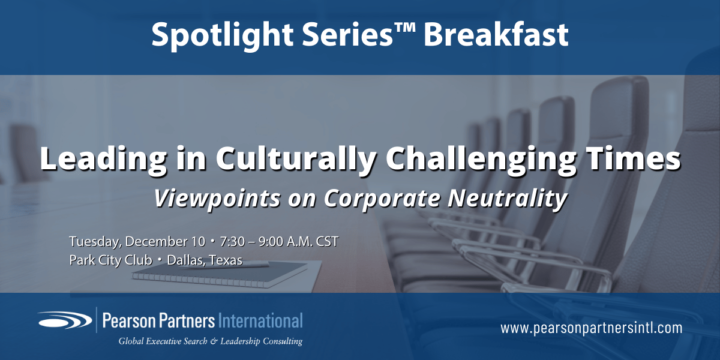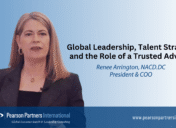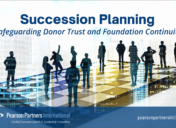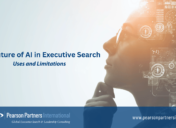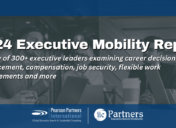The Cost of Corporate Neutrality: Insights from the Q4 2024 Pearson Partners Spotlight Series Breakfast
At our Q4 2024 Pearson Partners Spotlight SeriesTM breakfast, held on December 10 at Park City Club in Dallas, senior executives from across industries gathered to explore a timely and complex leadership challenge: corporate neutrality. As geopolitical conflicts escalate, societal divisions widen and stakeholders demand greater corporate accountability, leaders face mounting pressure to navigate when, how—and even whether—to take a stand.
Our panel of seasoned executives and advisors tackled this issue, offering valuable perspectives on how organizations can balance stakeholder expectations, manage risks and lead with authenticity. The conversation, moderated by Pearson Partners International Chairman and CEO Keith Pearson, provided a thoughtful forum for sharing insights and practical strategies.
Exploring the “Illusion” of Corporate Neutrality
Keith Pearson opened the discussion by framing the concept of neutrality as, in many cases, an illusion. Drawing from the Edelman Trust Barometer, he noted that 60 percent of people expect CEOs to take public positions on societal issues, while 80 percent of consumers say they are influenced by these corporate stances. Meanwhile, 65 percent of employees believe that companies bear a responsibility to speak up on critical issues.
This data underscores a clear dilemma for corporate leaders. As Keith said, “The illusion of neutrality only holds true if you avoid taking a stance entirely—but in today’s world, even silence speaks volumes.”
When Neutrality Isn’t Neutral
Panelists emphasized that neutrality is rarely as impartial as it may appear. One speaker noted that neutrality itself sends a message, albeit a more subtle one than an overt position. Another described neutrality as an intellectual construct—perhaps unattainable in practice—because companies inevitably take positions through their actions, omissions and communications.
“Have a heart but be smart” was the advice one panelist offered to leaders weighing whether to engage in social issues. Decisions must be aligned with the organization’s mission and values, rather than driven by external pressures or fleeting public opinion.
Understanding Stakeholders: Who’s Watching—and Who Cares?
The panel highlighted the importance of understanding stakeholder dynamics before making public statements. One speaker cited a Drexel University study that offers a practical four-quadrant framework for deciding when companies should take a stand:
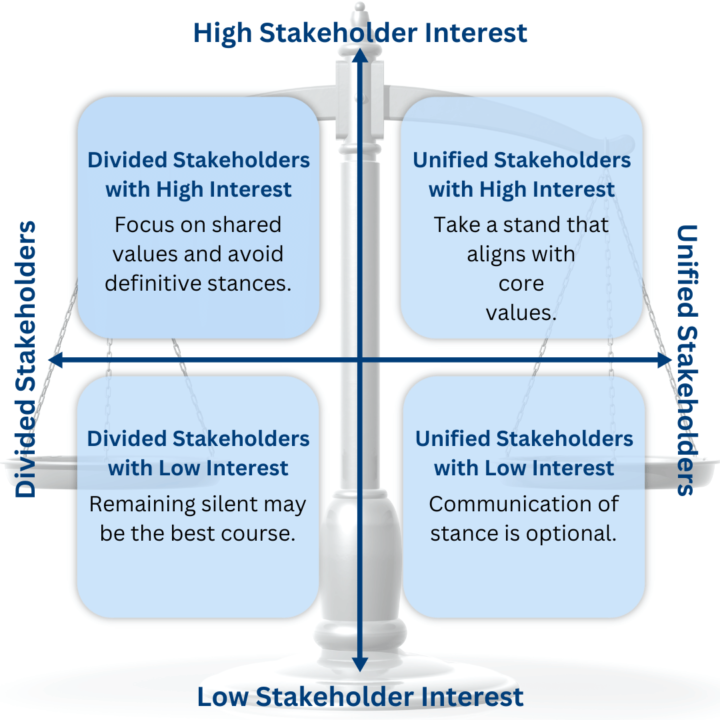
The challenge, panelists agreed, lies in accurately gauging where stakeholders fall within this model. Stakeholder expectations are increasingly generational. Younger employees and consumers—particularly millennials, making up 35 percent of the workforce as its largest component—expect companies to engage in social activism. A 2021 Allen Media study found that 90 percent of millennials factor a company’s position on diversity, equity and inclusion (DEI) into their decision-making.
By contrast, the average U.S. CEO is 58 years old. This generational gap can lead to internal tensions between executive leadership and a more activist employee base.
Navigating the Risks: Lessons from the Front Lines
The conversation addressed the real-world risks of taking—or not taking—a stand. One panelist cited the example of Target’s merchandising decision for Pride Month in 2023, which sparked consumer backlash, a sharp sales decline and a shareholder lawsuit. It served as a reminder that stakeholder misalignment, whether internal or external, carries measurable costs.
The panel also touched on the role of boards and legal counsel in managing these risks. In-house lawyers, one panelist noted, play a critical role in helping leadership teams weigh strategic risks and advising boards on potential legal and reputational implications.
DEI and ESG: Evolution or Retrenchment?
The discussion explored the ongoing evolution of DEI and environmental, social and governance (ESG) initiatives. While these programs have long been core to many companies’ missions, they have increasingly become lightning rods in the broader cultural debate.
Maintaining these initiatives is in itself a form of corporate expression. Whether companies rebrand, scale back or double down on DEI and ESG efforts, they send clear messages about their priorities and values.
Leadership, Courage and Corporate Ethics
Panelists stressed the importance of courageous leadership—making decisions that are both ethical and aligned with long-term corporate missions, even in the face of short-term backlash. “There is a sense that courageous leadership is in short supply,” one speaker observed.
Another recent example involved a major public retailer dealing with accounting discrepancies that were uncovered on the eve of its quarterly earnings call. Despite the financial challenges, the CEO’s public reaffirmation of the company’s ethical culture helped manage stakeholder perceptions and reinforced trust. One panelist suggested going further, though: “I would suggest leadership say we aspire to be…, or it is our goal to be…,” she said. “This approach can be more effective than saying we are this way, only to contradict that statement in delivering negative news later.”
This example underscored the panel’s consensus: Effective leadership requires not only making the right decisions but also communicating them in a way that fosters authenticity and trust.
Authenticity, Transparency and Communication Strategy
Authenticity was a recurring theme of the discussion. The panelists cited companies like Patagonia and REI as examples of organizations that consistently align their actions with their stated purpose, earning deep stakeholder trust.
By contrast, inconsistency between actions and values erodes credibility. Walmart’s shifting positions on DEI issues, for instance, have raised questions about its authenticity among certain stakeholders. The panelists said it is important to know your stakeholders and your market. One referred to the example of Chick Fil A, whose efforts to promote equality and support the LBGTQIA+ community were lauded in some markets but drew protests in others.
The panel recommended that companies focus on internal communication first, ensuring employees clearly understand the organization’s mission, values and reasoning behind decisions. Transparent, aspirational public messaging—emphasizing goals rather than guarantees—can then follow (often communicated publicly by well-informed and supportive employees).
Geopolitics and Global Stances: A Moving Target
The panel cautioned that taking positions on geopolitical issues carries heightened risk, especially as public opinion shifts over time. The conflicts between Ukraine–Russia and Israel–Palestine were cited as examples where regional perspectives vary widely, making global consistency difficult to achieve.
The takeaway: Leaders must weigh not only what they can say but what they should say—and how their statements align with their core mission.
Universities as a Case Study in Stakeholder Pressures
The conversation also explored parallels in academia. University presidents, much like corporate CEOs, are grappling with complex stakeholder pressures from students, donors and political entities. Balancing freedom of speech with public perception is a particularly thorny issue on topics such as the Ukraine–Russia and Israel–Palestine conflicts.
Private institutions, which can control campus access, have different considerations from public universities that in some states must navigate open campuses and state regulations. Leaders who engage directly with students often find more success in diffusing tensions, but social media can rapidly escalate controversies.
Practical Takeaways for Leaders
The breakfast discussion closed with a series of practical recommendations for senior leaders managing these complex dynamics:
- Know Your Stakeholders: Conduct regular assessments of stakeholder interests and generational differences.
- Align with Your Mission: Ensure any public stance aligns with the organization’s core purpose and values.
- Be Authentic and Transparent: Communicate honestly with both internal and external audiences and avoid overpromising.
- Prepare for the Consequences: Anticipate potential fallout and have a clear action plan for contingencies.
- Focus on What You Can Control: Prioritize authentic corporate citizenship and responsible leadership over performative activism.
- Manage Social Media Risks: Be aware of how quickly narratives can escalate and plan communications accordingly.
Closing Thoughts
As companies increasingly find themselves at the intersection of business, politics and social issues, the path forward is anything but simple. Yet, as our panelists made clear, courageous leadership, authenticity and mission alignment offer the best guideposts.
Pearson Partners International is proud to convene these important conversations through our quarterly Spotlight Series breakfasts. We look forward to continuing the dialogue and providing a forum where senior leaders can share insights and strategies for navigating today’s evolving business landscape.
Learn more about the Pearson Partners Spotlight Series™ breakfast events.
Related Posts
- ← Pearson Partners Wishes You a Happy New Year
- Navigating the Labor Market Amid Fed Pressure and Policy Shifts →

